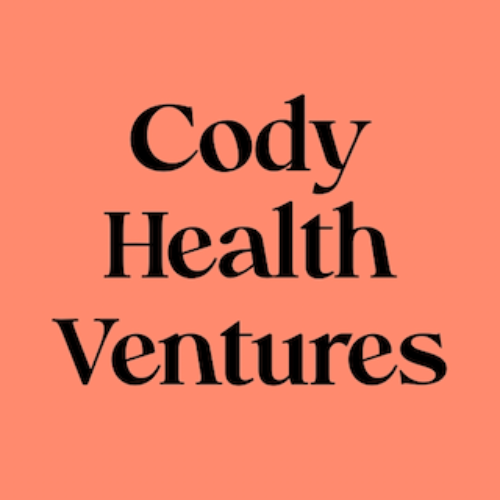Auto logout in seconds.
Continue LogoutWhile the internet of medical things (IoMT) isn’t a new concept, it can now transform how health systems care for patients and streamline clinical workflows. IoMT supports clinicians to make faster, more informed decisions by allowing health systems to leverage real-time data from a wide array of sources.
In this Q&A, Ryan Fox, Strategic Director of Digital and IoMT at GE HealthCare, discusses how IoMT tools, such as patient monitoring technologies and data platforms, can streamline workflows, improve team-based communication, and enable data-sharing.
How would you describe the role of IoMT in healthcare?
There are many connected devices in people's homes, so the internet of things (IoT) already exists in the world that we live in. The internet of medical things (IoMT) builds on the concept of IoT, which connects everyday devices like smart cars, doorbell cameras, light bulbs, and other cloud-enabled devices. For example, when somebody presses your doorbell, the doorbell sends a notification to your phone to let you know there's somebody at the door. In healthcare, IoMT connects medical devices so data can be shared with caregivers in near real time to more quickly inform treatment decisions.
IoMT is a fundamental evolution in the way we think about medical devices and the way data is communicated between devices. In a nutshell, IoMT enables a patient-centric approach to devices and data. When every device that is used to monitor a patient contributes data to the same central database, you achieve full data continuity throughout the patient’s stay. This reduces manual data collection and processing which leads to operational efficiency.
"Overall, the features of IoMT, like smart alarms, predictive analytics, and device interoperability, will help teams respond faster and more accurately, potentially improving patient outcomes and safety."
How does IoMT enhance the patient experience in high-acuity settings?
In high-acuity settings like EDs and ICUs, connected IoMT devices can improve operational efficiency, reduce manual documentation, and help turn data into action. A high-acuity setting can be a very scary environment when you're receiving care. Alarms are going off and clinicians are in and out of your room constantly. But IoMT can improve the patient experience not only by helping to reduce those unnecessary alarms, but also by improving communication between care teams. For example, when patients don't have to repeat their history every time a new provider comes into the room, care team interventions can be timely, data-driven, and efficient.
IoMT helps health systems collect and organize data through a centralized platform. It's difficult for us humans to manage the amount and variety of real-time data. The goal is to make IoMT and data collection and analysis easier for clinicians so they can operate more effectively.
How can IoMT best support providers, staff, and patients going forward?
The ability to anticipate needs and adopt truly personalized care for each patient is going to be the way of the future. As the volume of patients over 65 in acute care grows, hospitals must operate more efficiently. Ultimately, we have to give clinicians the tools to do more with less.
Use cases will continue to arise as we develop IoMT technologies. For example, GE HealthCare recently launched a technology to more quickly detect deterioration in patients and get them moving through the system. We’ve also seen other examples, like tracking medical equipment in real time, improving the utilization of high-value assets, and lowering equipment costs.
These technologies will also improve coordination across care teams. The number one communication method in healthcare today is the fax machine. Because most hospitals can’t afford to replace everything, we need a way to bridge old and new technologies in an efficient clinical workflow.
"IoMT can integrate devices and platforms into a unified ecosystem, facilitating seamless data sharing across departments. This type of connectivity ensures that care teams, from radiology to cardiology to nursing, all have access to the same patient data in real time."
How does interoperability among different devices or platforms play into IoMT implementation?
This is really the heart of why IoMT has not taken off in a bigger way. A lot of devices or manufacturers have created proprietary standards or protocols that are closed systems. Closed systems create a silo, and when that happens, data stays in that silo. It’s difficult to get to, making solutions that leverage it less efficient. That's the environment that we're in today.
GE HealthCare has chosen to focus on both backwards and forwards compatibility, so when we come out with a new device, it doesn't require additional integration points. It's able to communicate with both old and new technologies. Earlier this year, we announced that we will meet the standard of service device-oriented connectivity (SDC), which enables medical devices to communicate using the same language.
Connecting those data silos can improve clinical outcomes and patient safety. These high-acuity (or even low- or moderate-acuity) settings generate a ton of data. If we can actually use that data, we can reduce adverse events, improve earlier detection of patient deterioration, and encourage better adherence to protocols among clinicians.
What does successful scaling of IoMT across the health system look like, and what are the prerequisites for that success?
The simple way to answer this is that it requires leadership buy-in, a culture of innovation, investment in IT infrastructure, and a clear road map for integration and training. But it’s also about sharing ownership for the type of environment that we want our patients and clinicians to experience, so we’re all working towards a common goal.
We're spending a lot more time talking with clinicians and administrators about the future trajectory of their needs, ensuring that where we're headed is parallel to health system needs not just today but 10 years into the future.
What metrics should leaders use to evaluate the success of IoMT?
I don't think IoMT metrics are going to change much from what we currently prioritize: improving patient outcomes, patient and staff satisfaction, and minimizing unnecessary costs.
With IoMT, we're talking about shifting our approach to meet those proven metrics. We're delivering more personalized and efficient care, which can lead to better outcomes. And, in an environment where all this data is being generated, we’re helping clinicians and patients avoid the cognitive overload associated with managing that data, which is improving patient and clinician satisfaction.
How do you see IoMT evolving in the next three to five years? What should healthcare executives be preparing for now?
From an industry perspective, we're going to continue to see more AI developed for non-clinical purposes, such as ambient listening technologies and appointment schedulers, and we have already begun to see these solutions move beyond pilots and into larger-scale applications. We'll also see greater use of consumer grade devices in the home generating lots of valuable and rich data about patients outside of the high-acuity settings.
Healthcare executives should begin investing in scalable IoMT-compatible platforms now, focusing on things like cybersecurity and workforce readiness to adopt these tools and technologies to be prepared for this evolution in care. The future of healthcare technology really is connected, and organizations that embrace and begin scaling for IoT or IoMT today are going to be the ones that lead in quality, efficiency, patient experience tomorrow.
Cody Health Ventures is a strategic marketing consultancy that helps healthcare innovators go to market with clarity and purpose. We blend strategy, analytics, and empathy to drive growth across telehealth, aging, and population health. Our expertise spans go-to-market strategy, market analysis, opportunity sizing, and downstream execution — where data meets heart in healthcare marketing.
Founded by Julie Viola, MHA, and creator of wiched generation, a podcast exploring the realities of the Sandwich Generation, Cody Health Ventures brings together industry insight and human understanding to help organizations grow with purpose and impact.
Learn more about Cody Health Ventures
This article is sponsored by Cody Health Ventures, an Advisory Board member organization. Representatives of Cody Health Ventures helped select the topics and issues addressed. Advisory Board experts wrote the content, maintained final editorial approval, and conducted the underlying research independently and objectively. Advisory Board does not endorse any company, organization, product or brand mentioned herein.
To learn more, view our editorial guidelines.

This article is sponsored by Cody Health Ventures. Advisory Board experts conducted the research and maintained final editorial approval.
Don't miss out on the latest Advisory Board insights
Create your free account to access 1 resource, including the latest research and webinars.
Want access without creating an account?
You have 1 free members-only resource remaining this month.
1 free members-only resources remaining
1 free members-only resources remaining
You've reached your limit of free insights
Become a member to access all of Advisory Board's resources, events, and experts
Never miss out on the latest innovative health care content tailored to you.
Benefits include:
You've reached your limit of free insights
Become a member to access all of Advisory Board's resources, events, and experts
Never miss out on the latest innovative health care content tailored to you.
Benefits include:
This content is available through your Curated Research partnership with Advisory Board. Click on ‘view this resource’ to read the full piece
Email ask@advisory.com to learn more
Click on ‘Become a Member’ to learn about the benefits of a Full-Access partnership with Advisory Board
Never miss out on the latest innovative health care content tailored to you.
Benefits Include:
This is for members only. Learn more.
Click on ‘Become a Member’ to learn about the benefits of a Full-Access partnership with Advisory Board
Never miss out on the latest innovative health care content tailored to you.

